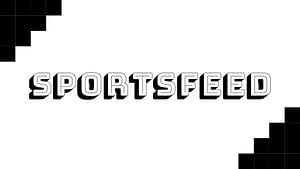
LO = Losers of
How Does the Draw Work?
Here’s where things get a little tricky. The draw begins with Pot 1 and works its way through to Pot 5. The six groups with four teams (Groups A to F) are filled first, followed by the six groups with five teams (Groups G to L). The UNL quarterfinal winners must be placed in groups of four to keep their schedules open for the finals in June.
Additionally, FIFA recently updated the draw regulations to ensure fairness. Previously, teams in Pots 2, 3, and 4 that needed to play playoffs were prioritized into groups of four, which often placed them in tougher groups. Now, this clause has been removed, leveling the playing field.
What’s at Stake for Each Pot?
Pot 1: England and Switzerland have a 75% chance of landing in a group of five, giving them a slight scheduling advantage.
Pot 2: Six teams (Sweden, Wales, Poland, Romania, Czechia, and Norway) don’t need playoffs, while six others (Ukraine, Turkey, Hungary, Serbia, Greece, and Slovakia) do. The group configurations for these teams depend heavily on where England and Switzerland are placed.
Pot 3: By the time Pot 3 is drawn, most five-team groups may already have a playoff team, forcing the remaining playoff teams into groups of four.
Pot 4: Similar to Pot 3, the three playoff teams in this pot (Armenia, Bulgaria, and Kosovo) are likely to end up in groups of four.
How Many European Teams Will Qualify?
With the World Cup expanding to 48 teams, UEFA’s allocation has increased from 13 to 16 spots. Here’s how it works:
The 12 group winners will qualify directly for the World Cup.
The 12 runners-up will enter playoffs, joined by four teams from the UEFA Nations League, to compete for the final four spots.
What’s the Role of the UEFA Nations League?
The Nations League adds an extra layer of intrigue. The 14 group winners from the 2024 edition are ranked, and the first four who don’t finish in the top two of their World Cup qualifying group will earn a playoff spot. If additional spots are available, they’ll be filled based on overall Nations League rankings.
When Will the Games Be Played?
Qualifying matches will take place across 10 international dates in March, June, September, October, and November. Teams in groups of five will start in March, while those in groups of four will begin in September, leaving room for Nations League and playoff matches.
What’s Next?
With so many moving parts, the UEFA World Cup qualifying draw promises to be a thrilling event. Will traditional powerhouses like Germany, Spain, and France dominate? Or will we see underdogs rise to the occasion? One thing’s for sure: the road to the 2026 FIFA World Cup is going to be a wild ride.
Breaking Down UEFA’s Road to the 2026 FIFA World Cup
Mark your calendars, soccer fans! The road to the 2026 FIFA World Cup in the United States, Mexico, and Canada is about to get underway, and the stakes couldn’t be higher. On Friday, Dec. 13, European nations will learn their paths to the biggest stage in world soccer when the UEFA World Cup qualifying draw takes place. With new rules, expanded spots, and a complex draw system, there’s a lot to unpack. Let’s dive into everything you need to know about how Europe’s best will battle for a ticket to the World Cup.
When and Where Is the Draw Happening?
The draw is set for Friday, Dec. 13, though the exact time hasn’t been confirmed yet. Soccer fans across the globe will be glued to their screens as the UEFA confederation’s qualifying campaign takes shape. This is the moment when dreams are made—or dashed.
How Are the Draw Pots Organized?
The draw pots are determined by FIFA World Rankings, with a twist. The eight teams participating in the UEFA Nations League (UNL) quarterfinals automatically land in Pot 1, alongside England, Belgium, Switzerland, and Austria. This ensures that the UNL quarterfinal winners, who need their schedules free in March and June, are placed in groups of four. Conveniently, these 12 teams are also the top 12 in the FIFA World Rankings.
Here’s a quick look at the pots:
| POT 1 |
POT 2 |
POT 3 |
POT 4 |
POT 5 |
| WO Spain-Netherlands |
Ukraine |
Scotland |
Bulgaria |
Moldova |
| WO Germany-Italy |
Sweden |
Slovenia |
Luxembourg |
Malta |
| WO Portugal-Denmark |
Turkey |
Republic of Ireland |
Kosovo |
Andorra |
| WO France-Croatia |
Wales |
Albania |
Belarus |
Gibraltar |
| LO Germany-Italy |
Hungary |
North Macedonia |
Armenia |
Liechtenstein |
| LO Spain-Netherlands |
Serbia |
Georgia |
Kazakhstan |
San Marino |
| LO Portugal-Denmark |
Poland |
Finland |
Azerbaijan |
|
| LO France-Croatia |
Greece |
Iceland |
Estonia |
|
| England |
Romania |
Northern Ireland |
Cyprus |
|
| Belgium |
Slovakia |
Montenegro |
Faroe Islands |
|
| Switzerland |
Czechia |
Bosnia and Herzegovina |
Latvia |
|
| Austria |
Norway |
Israel |
Lithuania |
|
WO = Winners of
Original source article rewritten by our AI can be read here. Originally Written by: ESPN
Share
Related
|





















